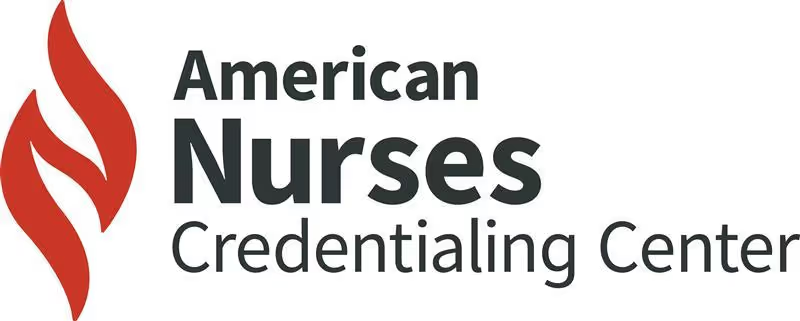Every NP student knows how hard it is to find a preceptor, so today we’re looking into the great journey of getting out there and finding rotations by yourself. This article is for every NP student that might not know where (or how) to start asking people in their area.
We know that it can be stressful to think about going out there on your own. In fact, there’s a good chance that you came to this article after trying your luck with a few preceptors. You might be desperate, you might be tired, but this is not the end. We promise.
At NPHub, we’re always trying to help NP students find their ideal preceptors. It’s what we do best. If you don’t want to go through our system, that’s ok. We understand. There are a lot of opportunities out there, and our main mission is to help you find a preceptor, let it be through our service or on your own!
Where nurse practitioners find preceptors?
Nowadays you can find a preceptor using social media, joining different groups and institutions for nurses, or simply showing up to the clinical site. Sometimes one will lead to the other, so it is important to know where to start. Additionally, using a preceptor directory can streamline your search process. Additionally, using a preceptor access pass can streamline your search process.
Effective patient care is central to clinical training, and finding the right preceptor with a specific population focus can significantly enhance your learning experience.
The first two social media outlets that you have to pay attention to are LinkedIn and Facebook. You will find lots of professionals and clinical sites there. Get ready to put your best foot forward and have your CV at hand.
Students should communicate with their preceptors and clinic staff to identify patients due for follow-ups, which can help students gain essential clinical experience and maximize patient interactions during their rotations.

Finding nurse practitioner preceptors on Facebook
We always advise our students to take a look at Facebook Groups, a valuable social media resource. You can find many relevant communities, like this one, who connect students with preceptors for free, by word of mouth.
The joy of Facebook Groups has to do with range. You can find groups in your area and you can join as many groups as you want. Remember to keep your privacy settings in mind: you can choose to show where you studied and where you have worked.
Sharing this information might help people in those groups identify a possible preceptor for you. You don’t have to share everything, of course. Just enough to keep the professional side of your life available for networking.
Interactions with patients during clinical rotations are crucial to meet clinical requirements and enhance learning.

A little bit about “networking”
What exactly is networking? You might have heard this word a lot. Simply put, networking is the process of making personal and professional connections. Meeting people who might have something to offer you. A preceptor access pass can be a useful tool for networking and finding preceptors.
When you join a Facebook Group, be sure to make a post that outlines who you are an NP-to-be, what you’re looking to accomplish, and your references. Don’t just make a post that tells people you’re looking for a preceptor. Seize the opportunity to brag a little bit. Make it stand out!
Finding preceptors on LinkedIn
Now that you’re all set with Facebook, let’s talk about LinkedIn. This platform is the most important meeting place for every professional (in every career). Having a good LinkedIn profile will do wonders when it comes to jobs and educational opportunities.
There’s a lot that goes into having a great LinkedIn profile. You can put everything that’s on your CV into LinkedIn and make it look better. In fact, you should, because this social network has grown to become king when it comes to networking.
If you find a possible preceptor (or clinical site) that you want to contact, be sure to have your credentials next to your last name, a good profile picture (your face preferably, with a good, simple background), and your job experience detailed neatly on the fields below. Engaging with providers in acute care settings on LinkedIn can offer vital experience and help meet specific patient interaction requirements.
Take some time out of your day to look for preceptors. You can search for terms like APRN, NP, APP, or “preceptor,” and you can filter the results by area.
When you connect with a possible preceptor, be sure to send them a short message introducing yourself. First impressions matter!
Joining your state's associations for clinical rotations
Local groups and organizations for nurse practitioners can help you connect to even more preceptors in your area. You won’t have as much range as you do with Facebook and LinkedIn, but you can find someone to steer you in the right direction. These associations often have specific guidelines and requirements for preceptors, including those related to population focus, to ensure that NP students receive comprehensive training. Many state associations also offer a preceptor directory to assist in finding qualified preceptors.
Let’s see an example: In Georgia, our home state, we have the United Advanced Practice Registered Nurses of Georgia. They are on Facebook and LinkedIn. You can check out their resources and job postings and contact them to see if they can help you find a preceptor.
The ENP Network
You will find that most of these state associations are part of the ENP Network. We have talked about them before, and you should create a profile there too.
The ENP Network is another professional hub for NPs to visit and stay updated on what's happening in the world of advanced practice. Think of it as a very special club for nurse practitioners.
When you join the ENP Network you will be able to use their handy preceptor directory completely for free. However, you can also get a paid, 3-month “Access Pass” that allows you to see new preceptors in real time, message them, and view more information about them. It costs $90.
The ENP Network claims to have over 1,000 preceptors on their list, with new ones coming in constantly. You can access this list for free but $90 does seem like a good price for being able to contact them directly.
We can't assure you that this source will be effective, but it's worth a try!

The ANCC
The American Nurses Credentialing Center might help you find a preceptor if you studied at a hospital or one of their approved schools. They have a preceptor directory for universities that are part of their Certification Eligibility Curriculum Review Program (CECRP).
As of July 27, their website showing the preceptor bank seems to be down. We will still include a link for it here. If you can’t access it in the near future go to the ANCC main website (linked above) and contact them for more information on finding a preceptor.
Finding a Preceptor through AANP
While there's not an specific AANP preceptor list, the American Association of Nurse Practitioners provide valuable tools like NPFinder and the NPO directory. These resources can help NP students locate nurse practitioners in various specialties across different regions who might be available for preceptorship.
Using these tools can be a great starting point in your search for a preceptor, especially if you're seeking experienced professionals who understand the unique challenges faced by NP students. Combine this with your own networking efforts to enhance your chances of finding a suitable placement.
Pro Tip: When contacting potential preceptors through AANP resources, personalize your communication to reflect your commitment to your professional growth. Mentioning your use of AANP's tools can make a strong, positive impression.
Contacting your State Board
You may also want to talk to somebody on your State Board of Nursing. They might be able to offer you some more information on where to find your preceptor. You have to use every resource at your disposal, and a short phone call is not going to hurt your chances.
If you’re asking yourself when to start, well, that’s easy, the answer is now! The coronavirus pandemic had made it even harder for NP students to find their preceptors. We have written lots of articles urging students to begin their search today, but we can only write so many.
These sites and organizations will definitely improve your chances of getting accepted into a clinical rotation, and if all your tries fail, we are always here for you.
We have to say that we also have our own preceptor bank and interactive map, which you can check out in real time, similar to a preceptor access pass. We handle your paperwork and everything related to setting up your rotation.
Common Mistakes to Avoid When Searching for a Preceptor
The journey to finding a preceptor can feel overwhelming, but understanding the common mistakes many NP students make can help you sidestep potential pitfalls. Here’s a deeper dive into the challenges students face during their search and how to overcome them. Utilizing a preceptor access pass can be a useful tool for avoiding these common mistakes.
1. Sending Generic Messages to Potential Preceptors
A message that lacks personalization can feel like spam to a busy health professional. When reaching out through a preceptor directory, preceptors want to feel valued and know why you’re contacting them specifically and not just because they’re on a list.
A generic message doesn’t convey genuine interest and might get ignored, even if the faculty preceptor is open to students.
How to Avoid It:
- Personalize Your Introduction: Address the preceptor by name and reference something specific about their work. For instance, if they specialize in family medicine and that’s your area of interest, mention how excited you are to learn in that environment.
- Showcase Your Value: Briefly share your experience, goals, and how you can be an asset to their practice. For example, mention your ability to work efficiently in fast-paced environments or your eagerness to contribute to patient care.
- Use a Professional Tone: Avoid slang or overly casual language. Your message should reflect the professionalism of your chosen career.
2. Not Following Up After the Initial Contact
You’ve crafted the perfect message, but after a week, there’s no response. A preceptor access pass can be a useful tool for following up and ensuring your message gets noticed. It’s tempting to move on, assuming the answer is no, but you could be leaving opportunities on the table.
Preceptors are often juggling patient care, teaching, and administrative work. Your email might get buried in their inbox or forgotten in the rush of daily responsibilities.
How to Avoid It:
- Set a Follow-Up Schedule: After sending your initial message, wait about a week. If there’s no response, send a polite follow-up that reiterates your interest. Example: “Hello [Name], I hope this message finds you well. I wanted to follow up on my earlier email regarding the opportunity to work with you as a student in your practice. I understand how busy you must be and would be happy to adjust to your availability. Please let me know if there’s a convenient time to discuss this further.”
- Stay Professional: Keep your tone respectful and concise. Avoid sounding impatient or demanding.
3. Waiting Too Long to Start the Search
Time is one of the most valuable resources in your preceptor search. Starting late means fewer options, higher stress, and a greater chance of missing deadlines. A preceptor access pass can be a useful tool for starting the search early.
Preceptors often schedule students months in advance. A last-minute search can leave you scrambling or forced to settle for less-than-ideal options.
How to Avoid It:
- Plan Ahead: Begin your search 6-8 months before your rotation starts. Some students even start a year in advance, especially in areas with a high demand for preceptors.
- Create a Timeline: Break down your search into manageable steps. For example:
- Month 1: Update your CV and LinkedIn profile.
- Month 2: Research and list potential preceptors or clinics.
- Month 3: Begin outreach and networking.
- Months 4-5: Follow up and finalize arrangements.
4. Overlooking the Power of Networking
Many students rely solely on email or cold calls to find preceptors, missing out on valuable connections within their existing networks and resources like a preceptor directory.Building relationships takes time, but networking can often lead to opportunities you wouldn’t find through direct outreach alone.
How to Avoid It:
- Leverage Your Current Network: Ask coworkers, supervisors, or former classmates if they know of any preceptors. Personal recommendations carry weight and can open doors.
- Attend Local Events: Join professional groups, conferences, or meetups for nurse practitioners. A face-to-face conversation can leave a stronger impression than an email.
- Engage on Social Media: Participate in LinkedIn and Facebook groups for NP students. Comment thoughtfully on posts, ask questions, and make yourself visible in these communities.
5. Failing to Prepare for Initial Contact
When you reach out to a preceptor, you’re making your first impression. Not being prepared can cost you the opportunity to build a connection. Utilizing a preceptor directory can help you find the right preceptor and make a strong initial contact.A disorganized or unclear message might signal a lack of professionalism or seriousness.
How to Avoid It:
- Research the Preceptor: Know their specialty, practice setting, and interests. Tailor your approach to align with their expertise.
- Have Your Documents Ready: Prepare an updated CV, references, and any required paperwork. If a preceptor requests information, you’ll be ready to respond quickly.
- Practice Your Pitch: Be ready to explain why you’re reaching out, what you hope to gain, and how you can contribute. This applies to both written messages and in-person interactions.
6. Assuming One “No” Means the End
Rejection is a normal part of the process, but it’s easy to feel discouraged after hearing “no” or receiving no response. The preceptor access pass can be a useful tool for persisting in the search for preceptors.Giving up too soon can limit your opportunities and delay your progress.
How to Avoid It:
- Shift Your Mindset: View each “no” as one step closer to a “yes.” Remember that preceptors have their own constraints, and a rejection isn’t personal.
- Cast a Wider Net: Don’t rely on just one or two contacts. Reach out to multiple preceptors across different platforms and regions.
- Keep Trying: Persistence is key. Stay organized, track your outreach efforts, and remain consistent in following up.

Where to Start When You’re Feeling Stuck
Between the endless searching, awkward follow-ups, and managing your already-packed schedule, it’s easy to feel like you’re drowning in the process. It’s a lot. The preceptor access pass can be a useful tool for finding preceptors and overcoming the challenges of the search.
But here’s the thing: every message you send, every post you write, and every connection you make brings you closer to the finish line.
And if you’re feeling completely overwhelmed and just DONE… we’re here for you!
At NPHub, we make finding a preceptor simple, fast, and stress-free. No endless searching. No awkward paperwork. No extra burden on your already packed schedule. We match you with a trusted preceptor in record time, so you can get back to focusing on your coursework and career goals.
Find a preceptor who cares with NPHub
Book a rotation.webp)








.webp)


.webp)



.webp)